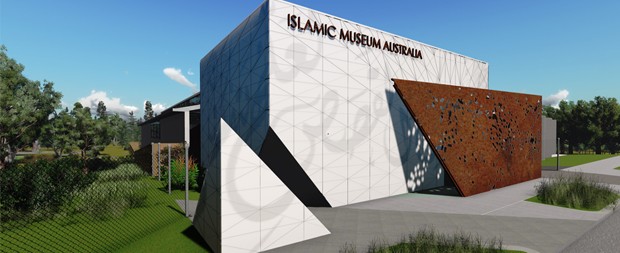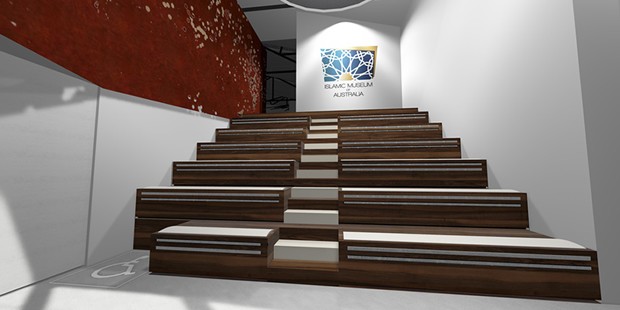Australia’s first Islamic Museum has opened its doors to the public, designed by Desypher Architecture around the idea of an ‘Islamic Exploratorium’.
Located in Thornbury, Victoria, the $10 million Museum encompasses five permanent galleries, a host of international and local visiting exhibitions, a café run by former Masterchef contestant Samira El Khafir, and a large multifunction centre and theatrette.
It was envisaged as a vanguard of interactive and participatory experiences, built to promote awareness and mutual understanding between cultures, while helping people nurture their curiosity about Islam.
“One of the most effective ways to promote cultural diversity and social cohesion is via the universal language of the Arts and education, which is why we have chosen to launch the museum with such strong influence on education and cultural awareness,” said Museum founder Moustafa Fahour.
According to the Museum, creating an Australian Islamic context and avoiding an orientalising of the project was important. This is reflected in various aspects of the design, including the rusted Corten veil – an iconic Australian material – that welcomes visitors into the building.
Perforated with modernised Indigenous art, the veil tells the story of Muslim history in Australia, from its first contact with the Makassans through to the present day.

The administration building is a white ‘glass box’, which the Museum says represents the purity and sophistication of Islamic architecture. Its flattened origami ‘unity sphere’ and sublime, abstract pattern of applied calligraphy and geometry and pattern stand in contrast against the rustic the Corten veil.
A courtyard separating the administrative building and existing warehouse space also entrenches the aspect of place. Not only does it act as a metaphoric link to the notion of the billabong, but it also assists with cooled natural ventilation through louvered openings in the surrounding glazed walls.
The idea of inviting visitors to enter and explore the museum also formed the basis for the design strategy, with a meandering path linking levels and crossing itself allowing groups to come into contact occasionally during their trip. Working installations such as a water clock, distillation cauldron, and a ‘sundial’ add to the overall experience in the garden.
Interaction is also evident in the galleries, which were seen as blank canvases “ready for the exhibit designer to go to work”.
“From the outset we were determined that the galleries would be interactive, not just an array of touch screens but real working exhibits as characterised by some of the better museums around the world,” Desypher said in a statement.
The project is the result of four years of work by Moustafa and Maysaa Fahour, an Australian couple currently living in Dubai. They began the project in 2010 with hopes that the museum would counter what they considered as negative stereotypes of Australian Muslims.

Images: desypher

